I’ve been spending a fair amount of time over the last few months reading poetry and essays by Cole Swensen. She’s the author of more than a dozen books of poetry that range from more or less traditional descriptions and meditations to more experimental “open texts.” In an essay entitled “The Rejection of Closure,” Lyn Hejinian has described this kind of writing as follows:
The “open text,” by definition, is open to the world and particularly to the reader. It invites participation, rejects the authority of the writer over the reader and thus, by analogy, the authority implicit in other (social, economic, cultural) hierarchies. It speaks for writing that is generative rather than directive. The writer relinquishes total control and challenges authority as a principle and control as a motive. The “open text” often emphasizes or foregrounds process, either the process of the original composition or of subsequent compositions by readers, and thus resists the cultural tendencies that seek to identify and fix material and turn it into a product; that is, it resists reduction and commodification.
This kind of writing, in other words, is concerned less in presenting the reader with a narrative or argument that can be paraphrased or “understood,” and more in providing the reader with an opportunity to enter into a kind of dialogue with the writer about how the juxtaposition of certain kinds of words or images might offer food for thought. In an interview in the Georgia Review, Swensen puts it this way:
I have a strong conviction that poetry’s role is to expand language. And there are so many ways that can be done—through innovative syntax, sound relationships that create new connections, images that do the same. Expanding language is so often a matter of creating new connections, which sometimes extend the network and at other times make existing linguistic networks more intricate. In other words, expanding language doesn’t only mean enabling it to cover new expressive territory, but also making existing expressive territory denser, quicker, more intense. Much great poetry seems to create an arc that spans from the concrete and graspable to the slipping-out-of-your-hands, and the leaps we make to catch that which is slipping land us in new regions, while allowing us to remain anchored in the “understandable.” I put “understandable” in scare-quotes because I’m not sure that poetry is ever about understanding—when we understand something, we’re necessarily standing outside of it, whereas poetry uses language in such a way that we don’t understand it, but experience it, participate in it.
As an example of what a poem of this kind might look like, I’d like to offer a short poem from Swensen’s 2004 collection Goest:The First Lightbulbprecise erase
a gate again
where the sky died
in a coin
This is a poem which I imagine that most readers, even dedicated readers of poetry, might initially find bewildering. I myself cannot claim to “understand,” but I’ve spent literally dozens of hours over a period of weeks inside this poem. I’ve read it, re-read it, memorized it, graphed some of its observable structural and sonic devices, recited it to myself while walking or washing the dishes. And even after all this time it still fascinates me. It is in some ways like a koan, in that it is short and invites thoughtful consideration without necessarily promising revelation as its end goal. It’s clear to me that no amount of further study will bring me to “closure” with this poem, but it’s precisely its open-endedness that keeps looping me back into it.
In the title essay from her remarkable book of essays Noise That Stays Noise, Swensen makes a distinction between the message of a poem and what she calls the “noise” within it, and offers a surprising (to me) redefinition of poetry:
Each source of noise corresponds to a different subsystem of the poem, such as the denotative system, the metaphoric system, the image system, the syntactical system, the rhythmic system, the system of sound relationships, and so on. What is information to any one of these subsystems may be noise to the others; for instance, the syntactical system may create difficulties for an appreciation of the denotative system in isolation (odd syntax can make it more difficult for a reader to know literally what is being said). Both systems are in themselves instances of organization, and these organizations can interfere with each other. However, at a "higher" level of organization, such as that of the entire poem, they can work together to create a more complex body of information. The more we look at possible sources and manifestations of noise, the more it seems that in terms of all literature, but most acutely with poetry, information itself must be redefined… Perhaps poetry itself can be defined as those literary instances of language in which the nonquantifiable aspects of its information overshadow the quantifiable.
“The First Lightbulb” is to my mind a pretty good example of a poem which a) foregrounds the “nonquantifiable” aspects of poetry, b) makes interesting use of juxtaposition and disjunction, and c) invites the participation of the reader in the creation of the meaning of the poem. Before you continue reading this post, I invite you to spend, say, ten minutes reading this poem and noticing whatever it is you notice about its vocabulary, its architecture, its sound relationships, its use of white space, and so on. I’ll pause here so you can try.
- - - - -
(Soothing music playing in the background.)
- - - - -
Okay, we’re back. I hope you enjoyed that. (Feel free to let me know what you came up with.)
My own “reading” leads me to the following observations (among many others):
• It’s clear that there is no “message” that a reader can reasonably be expected to infer or intuit.
• It consists of a series of words placed in what feels like a very deliberate set of parallelisms. “Precise erase,” for example, juxtaposes two words of two syllables each. The first syllable in each poem features a long e sound; the second syllable in each features another long vowel sound followed in both cases by -se. “a gate again” demonstrates a similar kind of mirroring, but with slightly different dynamics. There’s a repeated a-g-a sequence that is re-emphasized by the fact that the second word is “again,” which seems to gesture both backward toward the first line and forward toward the next, which (again) features two words with matching long vowel sounds: the sky died.
• The last line is a logical jump shift in several ways simultaneously. It doesn’t seem to connect syntactically in any obvious way with the lightbulb, with the gate, or with the sky. (Although it does, interestingly, begin and end with the same two letters: another mirroring.) It’s a line that raises questions just at the point where we might have been expecting closure. I’m quite sure that that is not accidental. In everyday parlance, the logical leap is not a bug, it’s a feature. It is one of the things that encourages me to go back to the top and start reading again, and as I have continued to do so I have managed to spend many pleasurable hours inside this poem.
• Despite whatever interpretive challenges the poem may present, it's clear that it has been very carefully constructed. The bulk of the poem, if we consider it as a structure, seems to consist of white space interrupted by verbal artifacts. In that sense, it reminds me a lot of Alexander Calder’s mobiles, in which various objects and shapes hang balanced in space, as if in distant conversation with one another. This poem also seems to stand in relation to traditional representational poetry as abstract art does in relation to traditional representational art: asking the viewer to set aside whatever previous expectations they might have had about what is supposed to be the case and engage with the work as a unique field of energies. It's not simply not an act of verbal communication, but also—and in some cases primarily—a created object: a sculpture made not of wood or wire or stone, but of words. (Tangentially related note: Three years ago I wrote a series of posts about Renee Gladman, who is also very interested exploring the way that sentences might be read as structures, and vice versa. And it turns out that Cole Swensen has written about Gladman as well, in her recent book Art in Time.)
• Even given the premise that the poem is not primarily concerned with meaning, it is of course inevitable that any reader, myself included, will be tempted to try to tease one out. Humans are pattern-making creatures, wired to seek meaning even where there clearly is none. That’s how we wind up with descriptions of the constellations and origin myths and suchlike. I might, for example, be tempted to take the title “The First Lightbulb” as a metaphor for coming up with a new idea, and then follow that thought into the elements of idea-generation such as precision and revision (precise, erase), to passing through a gate (again) to a new state of consciousness where even the things we are most familiar with are withdrawn (where the sky died, even if they were previously thought to be set in stone, or, more precisely, in metal (in a coin).
Having done so, I have no real reason to think that such a reading of the poem is plausible, much less definitive. There are alternative readings of the poem that might be attempted. But to what end? The problem with this kind of “reading” is that it reduces the multifaceted, open-ended experience of reality to something easier to "understand" but existentially inaccurate and impoverished. (Stephen Dobyns, in his book Next Word, Better Word, extends the logic of this argument to the deployment of any language in any circumstances: “No matter how complicated, exact, true, and beautiful the language may become, it is always a diminishment of the reality described.”)
Those of you who have been following this blog for any length of time know that in addition to my interests in teaching and in writing, I have for many years now been a maker of collages, and other sorts of artwork. I see concerns in this poem with many of the same elements that I am very much aware of when I am working with my own materials: lines, shapes, juxtapositions, contrasts, negative space, and so on.
Needless to say, the time that I have spent reading Swensen’s poetry, as well as that of other poets she discusses in her essays like Peter Gizzi and Susan Howe and Charles Olson, has led me to reconsider my own default notions of what poetry is and how I have gone about writing it in the past. I host a poetry group that meets weekly on zoom, at which each of us presents a poem we have written in order to get feedback from the others about what works for them and what does not. As I have begun trying to put into practice some of Cole Swensen’s notions about poetry as a zone for “expanding language” into new expressive territories, I have on more than one occasion been asked by a member of the group, “What makes this poetry?” That's a terrific question. It’s the kind of question that starts to open doors in the mind. And an open door is an invitation ("a gate, again"?) to step through and behold what surprising realities might be waiting for you on the other side.


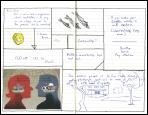
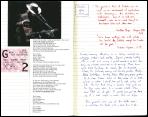

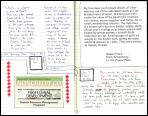
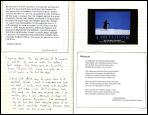

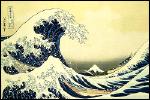
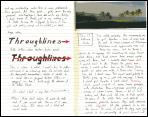
No comments:
Post a Comment